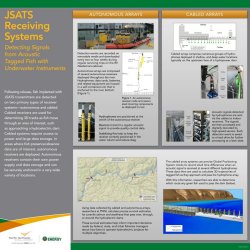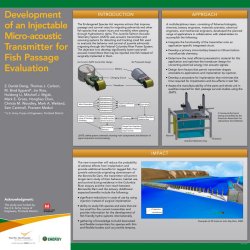Technologies & Products
Juvenile Salmon Acoustic Telemetry System (JSATS)
The Juvenile Salmon Acoustic Telemetry System (JSATS) employs acoustic transmitters and receiving systems to remotely track fish in one, two, or three dimensions. Development of the system was initiated in 2001 for the U.S. Army Corps of Engineers Portland District by the PNNL and NOAA Fisheries. The goal was to create an acoustic transmitter small enough for implantation in the smallest migratory individuals of the juvenile Chinook salmon and steelhead populations of the Columbia River basin. The JSATS has been used to monitor the behavior, movement, habitat use, and survival of juvenile salmonids migrating from freshwater (through rivers, reservoirs, and past hydroelectric dams) into saltwater. Although the JSATS initially was developed and used extensively to study salmonids, its utility is applicable to a wide range of aquatic species. The JSATS has also been used to monitor the behavior of channel catfish, smallmouth bass, northern pikeminnow, and walleye.

JSATS Receiving Systems
Enlarged View

JSATS at a Glance
Enlarged View

Development of an Injectable Micro-acoustic Transmitter for Fish Passage Evaluation
Enlarged View

JSATS Surgery Training
Enlarged View

JSATS Tagging and Release Procedures
Enlarged View
Visit the website at: http://jsats.pnl.gov/Default.aspx
